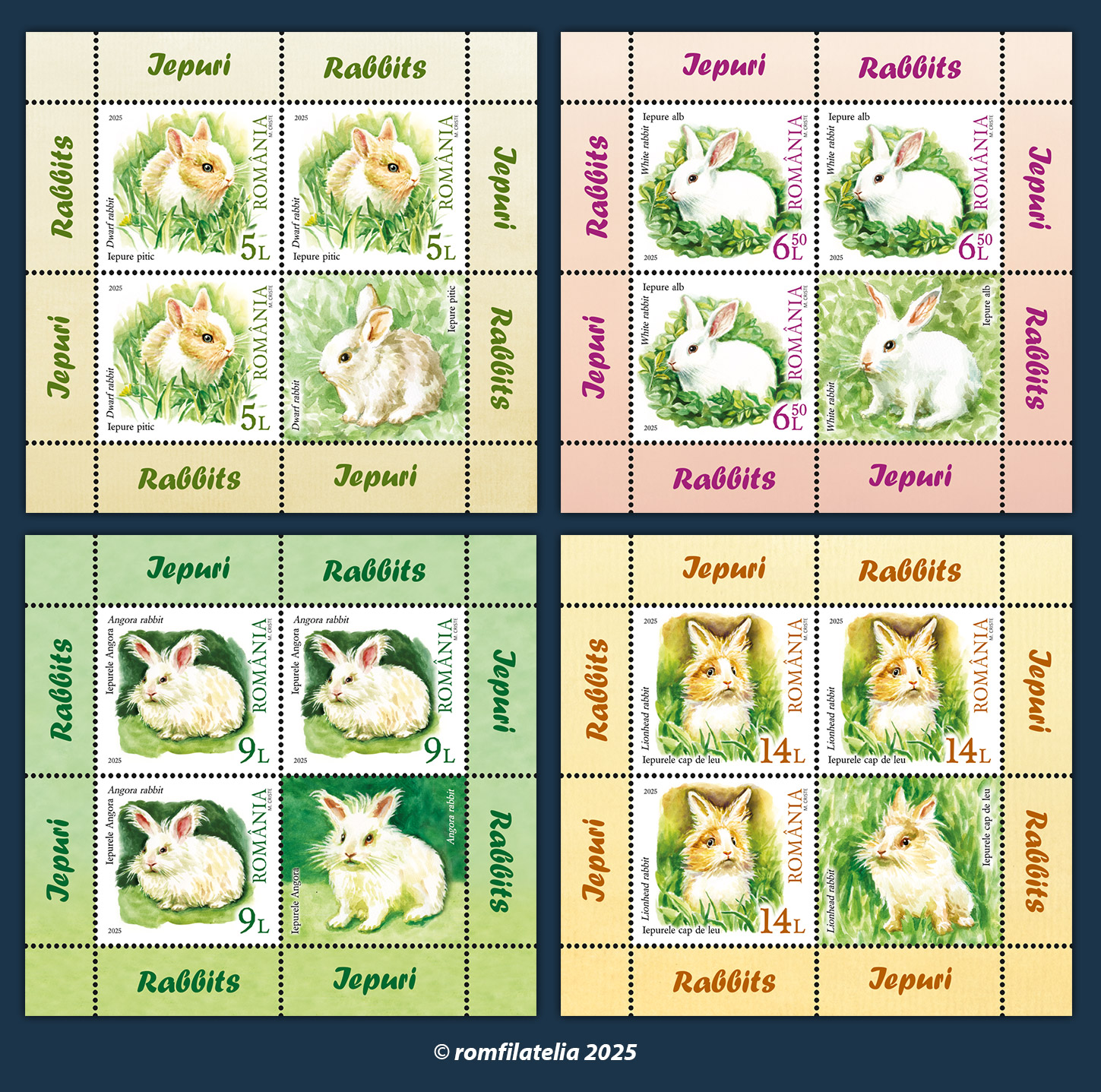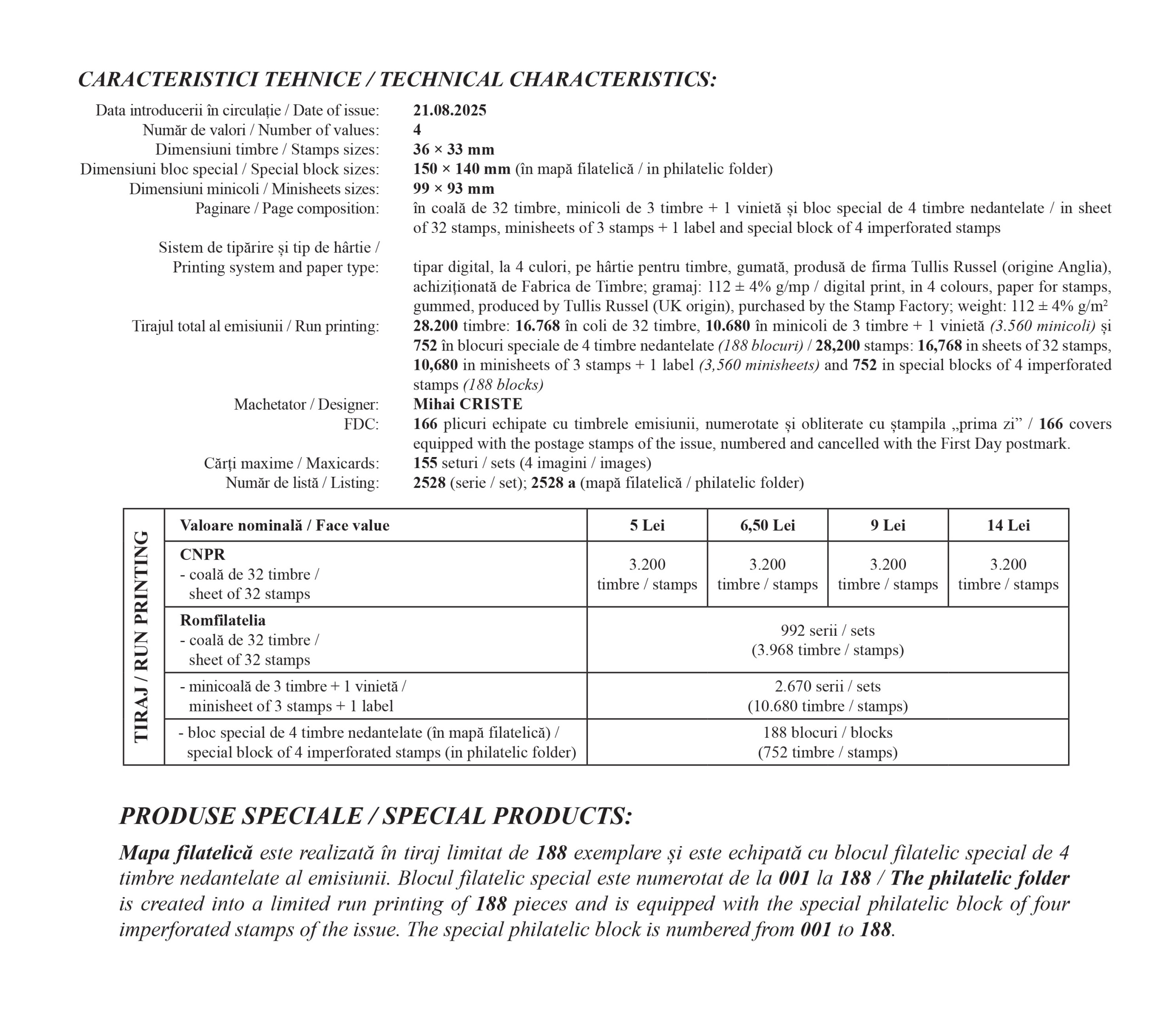 Romfilatelia introduces into circulation on Thursday, August 21st, a postage stamp issue belonging to a traditional collecting theme: Fauna. Under the generic title Rabbits, the issue includes four postage stamps, a First Day Cover, 4 maxicards for maximaphily enthusiasts and a philatelic folder with a special product in a limited edition.
Romfilatelia introduces into circulation on Thursday, August 21st, a postage stamp issue belonging to a traditional collecting theme: Fauna. Under the generic title Rabbits, the issue includes four postage stamps, a First Day Cover, 4 maxicards for maximaphily enthusiasts and a philatelic folder with a special product in a limited edition.
Rabbits belong to the mammals of the family Leporidae, order Lagomorpha. Some species of rabbits give birth to young covered with fur and with open eyes; others give birth to naked and blind young. A typical representative of the first category is the European hare (Lepus europaeus), while the second category includes what we call the European rabbit (Oryctolagus cuniculus), the ancestor of all domestic rabbit breeds.
Unlike in Romanian, where only the generic word ‘iepure’ is used, other languages commonly use two different terms: hare and rabbit (in English), lièvre and lapin (in French), liebre and conejo (in Spanish), Hase and Kaninchen (in German), etc.
Rabbits are widespread in Eurasia, the Americas (except the southern part of South America), and Africa; they have been introduced to Australia, as well as New Zealand and numerous other islands in the Atlantic, Pacific, and Indian Oceans. They are mammals that reproduce rapidly. Although they are characterized as timid and fearful, rabbits become sociable with people who show care and affection towards them.
European hares are capable of reaching speeds of 70 kilometres per hour and making jumps of over three metres. A hare’s field of vision approaches 360 degrees (it can see behind itself as well).
Considered a symbol of nature’s rebirth in the spring season, the rabbit has been associated with the Easter holiday. Rabbits can live up to about 10 years, an age reached by some domestic rabbits.
Rabbits are more active in the morning and evening. European rabbits live in colonies. Rabbits feed on grass, leaves, tree bark, vegetables (notably the traditional carrot), and cereals.
Among the curiosities about rabbits, we mention: when they are content and relaxed, they purr (but not like a cat, rather by using their teeth); their teeth never stop growing and must be worn down by gnawing on hard food; rabbits’ ears help regulate body temperature; during jumps, rabbits can spin completely in the air; they usually run in a zig-zag pattern to confuse their pursuers.
The postage stamps of the issue feature original artwork depicting images of pet rabbits such as: Dwarf Rabbit, on the stamp with the face value of Lei 5, White Rabbit, on the stamp with the face value of Lei 6,50, Angora Rabbit, on the stamp with the face value of Lei 9 and Lionhead Rabbit, on the stamp with the face value of Lei 14.
The First Day Cover features an image of a black Dwarf Rabbit.
Romfilatelia thanks Mr. Luis Ovidiu Popa, 1st Grade Scientific Researcher, Manager of the ‘Grigore Antipa’ National Museum of Natural History, and museologist Alexandru Iftime, Ph.D., for their expert consultancy provided in the development of this postage stamp issue.









